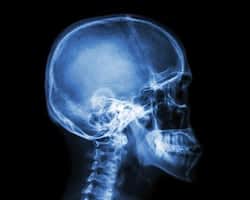When you have an injury that needs treatment, it is essential that you obtain the appropriate images to confirm and understand your diagnosis. Only then can your pain be addressed and your body healed.
A local imaging center is where you can obtain x-rays and fluoroscopy imaging to help with your treatment. Keep reading to learn the difference between the two.
What Is an X-Ray?

Orthopedic doctors, radiologists, and other medical professionals use them to visualize injuries, monitor the progression of illnesses, track the success of a particular course of treatment, and various other functions.
They are generally considered to be safe for most individuals to undergo, the exception being if the small radiation risk that exists with x-rays somehow outweighs the benefit of the information it will provide. In these cases, a responsible medical professional will make an alternate recommendation, but this is incredibly uncommon.
What Is Fluoroscopy?
Fluoroscopy is an innovative technology that offers many similar benefits in reference to imaging as x-rays do. It uses the same technology as an x-ray in order to generate a working image for a doctor to interpret in the process of caring for a patient.
However, it does so in a video capacity, which can open up many other opportunities for its usefulness. The fluoroscope allows the observer to visualize the interior of the body as it moves and functions.
Doctors find this to be helpful when performing procedures such as:
- The insertion of catheters in various blood vessels – these procedures are difficult to perform without the ability to see where the needle is moving. Fluoroscopy assists in proper and accurate placement of a catheter.
- The insertion of devices into blood vessels – these devices are called stents and they help to allow blood to flow more freely when a blood vessel has become narrowed or in some way obstructed.
- Performing Angiograms – this procedure allows the doctor to see what is going on, or more appropriately going wrong inside of the body’s blood vessels.
- Enemas or x-rays for gastrointestinal purposes – these exams are called barium x-rays and they assist doctors in visualizing the GI tract to diagnose issues.
- During Orthopedic Surgical procedures – when an orthopedic surgeon needs to replace a joint or mend a fracture, they will often do so with the help of the fluoroscope.
How Are X-Ray and Fluoroscopy Different?
X-ray and fluoroscopy technology are essentially the same, with a few notable differences. They both are powered by electromagnetic radiation for the purpose of obtaining necessary images.
- X-rays are static images. They provide images of the inside of the body in still form. Fluoroscopy imaging provides a live “video” format image, which will show movement in the body or of an instrument. The different things these imaging technologies can accomplish relate mostly to this difference.
- X-rays carry a smaller risk of radiation-related risks than fluoroscopy does. This is just simple math since a fluoroscope must be trained on a part of the body over a period of time in order to accomplish the function it is necessary for. Sometimes this is a brief moment in which a small action can be performed. In other cases, it can mean that the exposure to radiation the patient maintains goes on for the length of a surgery.
How Will I Know Which Imaging Scan Is Right for Me?
Your doctor will make a recommendation based upon the needs of your particular case. If you have any concerns about the risks associated with the process of obtaining the images themselves, or with the logistics surrounding using these technologies, consult with your doctor. They should be well prepared to assuage any difficulties you might be having with x-rays or fluoroscopy.
At AICA Orthopedics, we regularly find the need to utilize both x-ray and fluoroscopy technology to best diagnose and treat our patients. Contact a member of our team today if you have any questions or are in need of diagnostic imaging to treat your ailment.
